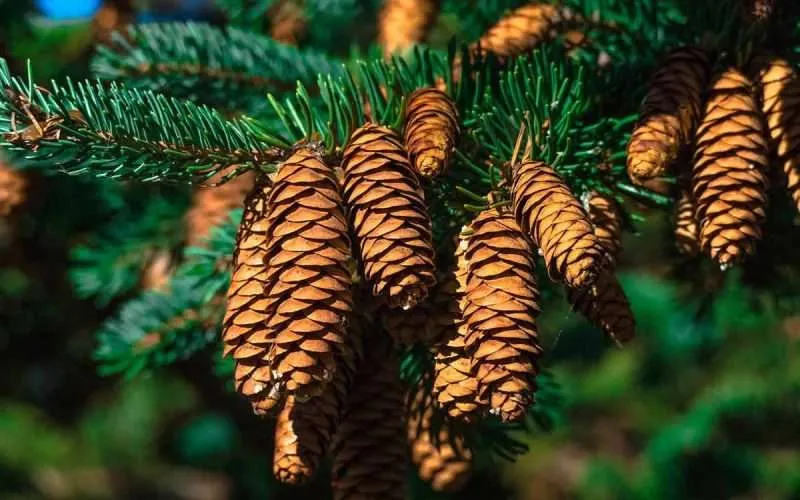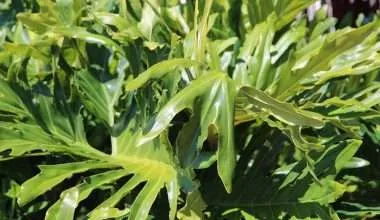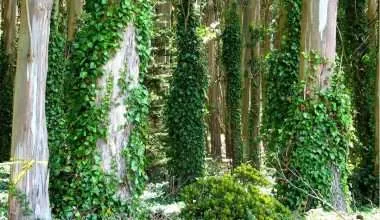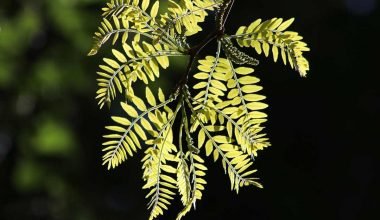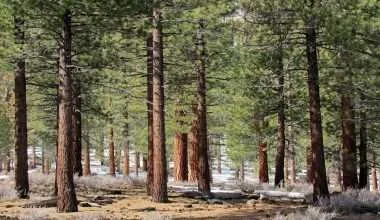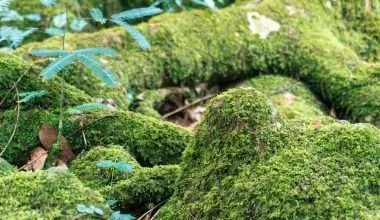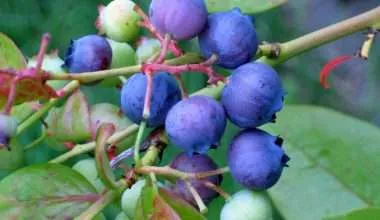Table of Contents Show
Belonging to the pinus genus, pine trees are conifers that have needle leaves. The Pinus genus consists of more than 126 different species of evergreen conifer shrubs and trees.
The appearance of each of these pine tree types depends on the species and variety of the tree itself. When identifying or planting a pine tree, it’s important to choose the right variety.
Pine trees live for decades and you definitely want to ensure that your tree is a keeper! Read on to learn about some of the most famous varieties of pine trees.
What are pines?
The Pinus genus is a part of a larger family called Pinaceae which also include cedars, larches, spruces, hemlocks, and firs.
Being the largest in the family, they have a variety for every field and place, whether it being a 235ft tall tree found in Rogue River-Siskiyou National Forest in Oregon or Siberian dwarf pine of 3 to 10ft which is planted in pots.
Pines do not produce flowers or fruits. They are gymnosperms that have naked seeds, which are enclosed in woody cones rather than fruits. Pine trees are also resinous, and famous for being most susceptible to getting hit by lightning!
Pine trees are cold hardy and evergreen that have a showy appearance in all seasons making them a great choice for public places. They are easily identifiable as well from their dense bundles of needles ranging from 1-8 depending on the variety.
Their needles help them in resisting cold temperatures because they have small surfaces. Due to this ability, you can commonly spot pine trees in cold places like mountain topics or countries like Canada or Sweden.
Uses And Benefits
Pine trees have been used for reforestation because of their fast growth, pine has replaced whole forests as part of the reforestation process. This trait also makes it a source of lumber that is used in construction, and it’s a softwood adding to its value.
Pine also produces edible nuts and is used in the food industry as well. The different and amazing varieties also make pine a sweetheart in the gardening sector.
Types Of Pine Trees For Your Yard
Going through all of the existing pine species, including the natural and cultivars, will not be possible here. This list will get you acquainted with some of the varieties of pine trees that you can have in your home yard.
1. Pinus Sylvestris (Scots Pine)
Scots pine is a species native to Asia and Europe. It’s the iconic Christmas tree that we are all familiar with. The shape is conical, its bark is red and cracked, and each fascicle has 2 needles. The fascicles are green and are about 1 to 2 inches (2.5 to 5 cm) long.
Its cones are a red color when it’s fertile but start transitioning to brown as they mature which takes around 2 years. The trunk of scots pine grows very wide, straight, and upright. They’re cut during the festive seasons and are decorated.
Scots pine grows fast so it can serve as a quick fix to barren land, even on large scales. The maximum height of this species is 15 to 50 ft and prefers the USDA zones 3 to 7. Scots pine grows well under the full sun.
2. Pinus Lambertiana (Sugar Pine)
Native to California, Mexico, Nevada, and Oregon, this species is a giant of the pinus genus. Sugar pine has massive cones along with colossus height. On average the cones are 12 inches long (30 cm) but can reach a maximum of 22 inches (56 cm) in length.
The cones are green when young but turn to light russet brown as they mature. Its trunk has a conical shape and is upright. The fascicles are about 3 inches (7.5 cm) long and have 5 needles on each of them.
Sugar pine isn’t cold hardy and isn’t easy to grow either. It’s better to avoid planting this tree if you don’t have a huge park-like area. It can reach a height of 100 to 200 ft (30 to 60 meters) and grows under full sun. USDA zones 6 and 7 are better for sugar pine.
3. Pinus Radiata (Monterey Pine)
It’s one of the most easily identifiable in the pinus genus due to its distinctive appearance. The trunk is large but twists and bends instead of being straight. The bark is black and has a cracked and ribbed appearance.
It has an umbrella-shaped crown, the needles are green, and are arranged in fascicles of two and three. The cones are wide and pointed and have three colors. When it’s young, the color is green. Later, it turns brown, and lastly, it becomes virtually black.
Monterey pine is usually grown for its timber and original bark that is used in mulches. This species is native to California and Mexico. It has an amazing landscape presence because of its unique shape and the color contrast between leaves and bark.
Monterey isn’t cold hardy. It grows under full sun and prefers USDA zones 7 to 9. It can grow up to a height of 50 to 100 ft (15 to 30 meters).
4. Pinus Mugo
Pinus Mugo is a dwarf species that consists of small trees and shrubs. This Europe native species is very popular and common in gardening. You will find lots of varieties that can be used for hedges, borders, or ground covers. It’s also very popular for bonsai making.
The trees usually have round shapes and the needles are arranged in the fascicles of 2. Their bark has shallow cracks and is brown. The cones are small and slightly pointed, ovoid in shape, and covered in a few scales.
The shrub variety can reach a height of 3 to 6 ft (0.9 to 1.8 meters) while the trees can grow up to a height of 10 to 25 ft (3 to 7.5 meters). They prefer partial shade or full sun and grow well in USDA zones 3 to 7.
5. Pinus Patula (Mexican Weeping Pine)
Mexican weeping pine is easily identifiable because of its appearance. The tree has thin and (slightly) arching branches with groups of long drooping needles that can reach a length of around 6 to 10 inches (10 to 25 cm).
The fascicles aren’t regular because they have either 3 or 4 and sometimes have 5 needles. Its cones are covered in scales and are large and tubular. The trunk has a soft conical shape and is upright. Its bark is cracked and has a gray to red color.
This is a garden favorite species that can reach a height of 60 to 80 ft (18 to 24 meters). It prefers USDA zones 8 and 9 and full sun.
6. Pinus Pinea (Italian Stone Pine)
It’s a species native to Southern Europe, Lebanon, and Turkey. The crown is almost flat and umbrella-shaped, which makes it look like a giant flat cap mushroom. Its trunk long, barren, and is slightly bent or straight.
The bark is brown and deeply cracked. Its fascicles have only 2 needles that are 4 to 7.2 inches (10 to 18 cm) long. It’s mostly grown for its delicious pine nuts and the cones they are enclosed in are wide.
Italian stone pine grows in USDA zones 9 to 10 and isn’t easy to grow outside its native Mediterranean basin. The maximum height is 30 to 60 ft (9 to 18 meters) and it grows under full sun.
7. Pinus Bungeana (Lacebark Pine)
The unique look of this tree makes it easily identifiable and special. Lacebark branches off as 10 straight trunks from near the ground with a patchwork of different colors on it. The colors include cream yellow, silver gray, and russet. Its habit is upright and oval.
It has small cones that are covered in one or two dozen scales. The fascicles have 2 or 3 needles of length 2 to 4 inches (5 to 10 cm).
Lacebark is a garden and landscape favorite due to its unique look. It’s a china native species that can grow up to 30 to 50 ft (9 to 10 meters). It prefers USDA zone 5 to 9 and requires full sun.
8. Pinus palustris (Longleaf Pine)
If you desire a fast-growing giant for your large garden, this can be an option for you. Its identifiable feature is its long needles which are 8 to 18 inches (20 to 50 cm) long. You’ll have to look down the ground to spot the needles.
The trunk is upright and is used in lumber, the bark is deeply cracked and brown. Longleaf pine produces fairly large and wide cones.
Longleaf species is native to the south of the USA. It reaches a height of 60 to 100 ft (18 to 30 meters). It requires full sun and grows in USDA zones 7 to 9.
9. Pinus Pinaster (Maritime Pine)
The umbrella-shaped crown and its Mediterranean looks resemble the Italian stone pine. Maritime pine has a thicker crown and bent branches that start very low down the trunk compared to the Italian stone pine.
It has green needles in fascicles of two or three. The bark is cracked, which is brown from the outside and gray from the inside. The cones have a conical shape, are long, and are often bent at the tips.
Maritime pine can adapt easily to dry and sandy soils. Its maximum height is 60 to 100 ft (18 to 30 meters). It prefers USDA zones 7 to 9 and requires full sun.
10. Pinus Ponderosa (Bull Pine)
Bull pine is native to Canada, British Colombia, and the USA. It’s mainly a forest tree because of its size. The tree is upright and has a conical to a cylindrical shape. Its branches start from fairly low down the stem.
Its green needles are in fascicles of 2 or 3 and are about 4 to 7 inches (10 to 18 cm) long. The cones are about 10 inches (25 cm) long. The bark is cracked and brown and red.
Bull pine can grow up to 60 to 200 ft (18 to 60 meters) tall. USDA zones 5 to 8 are suitable for them and they require full sun.
11. Pinus Resinosa (Red Pine)
Red pine is also known as Canadian or Norway pine. It’s a resinous tree and is with an upright habit. The shape changes from conical to round as they mature.
The bark is cracked, brown, and peels of easily. Its needles are in fascicles of 2 and are often twisted slightly. They can reach a length of 4 to 7 inches (10 to 18 cm). Its cones are small, round, and covered in scales up to 2 dozen.
Red pine is cold-hardy and as its alternate name suggests, it’s native to Canada and north of the USA. its height is in the 50 to 80 ft (15 to 24 meters) range and prefers USDA zones 2 to 7. It requires full sun.
12. Pinus Densiflora (Japanese Red Pine)
The key identifiable feature of Japanese red pine is the thickness of its foliage and canopy. It’s a small tree and has a round/oval-shaped crown. The bark is red (often gray) and flaky. The tree branches lower down the trunk which adds to its low and thick appearance.
The needles point upward and are in fascicles of 2 with a length of 3 to 5 inches (7.5 to 12 cm). Its cones vary colors as they age, from blue-green to brown. The cones are covered in around 2 dozen scales.
Japanese red pine (as the name suggests) is native to Asia. It’s elegant and oriental in appearance. It reaches a height of 12 to 20 ft (3.6 to 6 meters). It requires full sun and grows in USDA zones 3 to 7.
13. Pinus Brutia (Turkish Pine)
Turkish pine is hard to identify because it doesn’t have a specific shape. It either has a round and pointed crown or flat umbrella-like. The branches spread outward to form clouds of foliage and the trunk split from down below.
Turkish pine has small and conical cones, the color is red with white spots at the tip of every scale called prickles. It has red and gray bark, which is cracked, and the needles are in fascicles of 2.
This species is native to Bulgaria, Western Asia, Italy, Greece, Turkey, and Ukraine. The maximum height is 30 to 80 ft (9 to 24 meters). It thrives in USDA zones 8 to 11 and requires full sun.
14. Pinus Edulis (Two Needle Pinyon Pine)
A fairly small variety of pine, which is often mistaken for a shrub. Typically, the stem is twisted, and low branches extend forth and upward from the center. They do, however, occasionally arch.
Conical to ovate overall, typically with a pointy apex. The cones are tiny, nearly spherical, brown to orange-brown in hue, and have a maximum of only 15 scales. They have edible seeds inside. It has gray and cracked bark.
The key identifiable feature would be its needles which are connivent (means they grow attached). There are usually 2 per fascicles but sometimes grow 1 or 3 on each.
This species is native to Mexico and USA. It reaches a height of 20 ft (6 meters). It thrives well in USDA zones 5 to 8 and grows under full sun.
15. Pinus Flexilis (Limber Pine)
Limber pine has a pointed conical shape and an upright trunk that thickens with age. The branches point slightly upward as well.
The bark is gray and changes texture from smooth to cracked as they mature. It has short leaves of green to blue shade with lengths between 1 to 3 inches (2.5 to 7.5cm). There are 5 needles on each fascicle.
The cones are conical in shape and appear in clusters on the branches. They are green and blue when young. They have a few scales summing up to 2 or 3 dozen.
This species is an excellent landscape plant and is native to the USA and Canada. It can reach a height of 30 to 60 ft (9 to 18 meters). It thrives in USDA zone 4 to 7 and grows under full sun.
